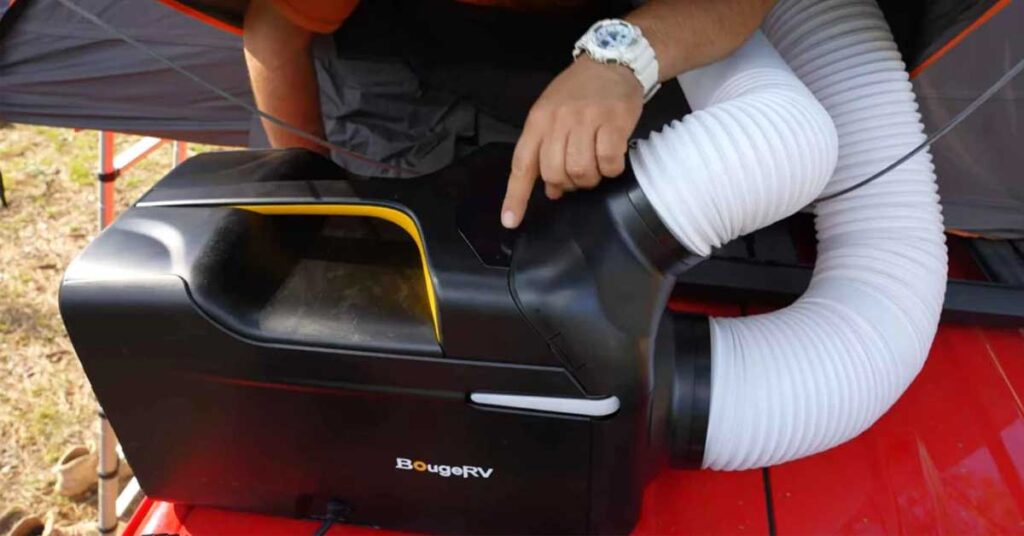Refrigerators serve as indispensable appliances in households, safeguarding perishable foods and ensuring their longevity. Yet, like any complex machinery, refrigerators encounter various issues affecting their performance. From temperature irregularities to malfunctioning ice makers, understanding these common refrigerator problems and how to effectively troubleshoot them is crucial. In this comprehensive guide, we’ll explore prevalent refrigerator issues and detailed troubleshooting steps to address them comprehensively.
1. Refrigerator Temperature Inconsistencies
- Verify Power Supply: Ensure the refrigerator is receiving power by inspecting the electrical outlet and circuit breaker.
- Adjust Thermostat: Set the thermostat within the recommended temperature range to maintain optimal cooling.
- Unblock Air Vents: Clear obstructions from the fridge and freezer vents to facilitate proper airflow.
- Clean Condenser Coils: Remove debris from the condenser coils located either beneath or behind the refrigerator to enhance cooling efficiency.
2. Freezing of Refrigerator Contents
- Test Thermostat Functionality: Check the thermostat by adjusting it to its highest setting and listening for a clicking sound.
- Adjust Temperature Settings: Ensure the refrigerator temperature remains below 40 degrees Fahrenheit to prevent freezing.
- Inspect Temperature Control Components: Examine the thermostat, thermistor, and temperature control board for defects affecting temperature regulation.
3. Frost Buildup in the Freezer
- Evaluate Door Seal: Inspect the integrity of the door seal for cracks or damage allowing warm air infiltration, leading to frost accumulation.
- Assess Defrost System: Check for malfunctions in the defrost system, such as a faulty defrost timer or heater element, contributing to frost buildup.
4. Malfunctioning Ice Maker or Water Dispenser
- Examine Water Supply Lines: Inspect water supply lines and connectors for kinks, tears, or blockages hindering water flow.
- Check Water Inlet Valve: Ensure the water inlet valve is open and functioning correctly to supply water to the ice maker and dispenser.
- Replace Water Filter: Replace clogged water filters obstructing water flow and ice production.
5. Refrigerator Failure After Transportation
- Allow Settling Time: Wait at least four hours after transporting the refrigerator before plugging it in to allow the refrigerant to settle.
- Prevent Laying Down: Minimize laying the refrigerator on its side during transportation to prevent compressor damage and ensure proper functionality.
6. Refrigerator Leakage
- Turn Off Water Supply: Locate and shut off the water supply to prevent further leakage.
- Inspect Water Supply Lines: Check water supply lines and connectors for leaks, replacing damaged components as necessary.
7. Excessive Noise Emission from the Refrigerator
- Disconnect Power: Unplug the refrigerator before performing any maintenance or inspection procedures.
- Clean Condenser Fans: Remove dust and debris from the condenser fans located at the back of the refrigerator to reduce noise levels.
- Professional Assistance: Seek professional assistance if abnormal noise persists, indicating potential underlying issues.
8. Ineffective Refrigerator Door Closure
- Rearrange Groceries: Ensure stored items do not obstruct the refrigerator door from closing properly.
- Check Door Seal: Inspect the door seal for misalignment, damage, or wear, replacing it if necessary.
- Verify Refrigerator Balance: Use a level to check if the refrigerator is properly balanced to facilitate door closure and temperature consistency.
9. Non-functional Refrigerator Light
- Tighten or Replace Bulb: Attempt tightening the light bulb or replacing it with a new one to restore illumination.
- Inspect Wiring: Examine the wiring and connections inside the refrigerator for damage or issues if the light remains non-functional.
10. Excessive Moisture Inside the Refrigerator
- Assess Door Seal: Ensure the door seal is intact and free of gaps or damage to prevent warm air infiltration and moisture buildup.
- Minimize Door Openings: Limit the frequency and duration of door openings, particularly in humid environments, to reduce moisture accumulation.
- Utilize Refrigerator Desiccant: Consider using desiccant to absorb excess moisture inside the refrigerator and maintain optimal humidity levels.
11. Frequent Refrigerator Cycling
- Clean Fans: Remove dirt and debris from the condenser and evaporator fans to enhance airflow and cooling efficiency.
- Verify Temperature Settings: Ensure the refrigerator and freezer temperature settings are correctly configured to prevent excessive cycling.
- Professional Evaluation: Consult a professional technician if frequent cycling persists, indicating potential electrical issues requiring expert diagnosis and resolution.
12. Refrigerator Odor Problems
- Clean Interior: Remove all items from the refrigerator and thoroughly clean the interior with a solution of mild detergent and water. Pay special attention to spills and stains.
- Check for Spoiled Food: Discard any expired or spoiled food items that may be contributing to the odor.
- Inspect Drain Pan and Drain Tube: Clean the drain pan located underneath the refrigerator and ensure the drain tube is clear of any debris that may cause stagnant water buildup and foul odors.
- Replace Air Filter: If your refrigerator is equipped with an air filter, replace it according to the manufacturer’s recommendations to help eliminate odors caused by bacteria and food particles.
- Baking Soda Solution: Place an open box of baking soda or a container filled with activated charcoal in the refrigerator to absorb odors. Replace it regularly to maintain effectiveness.
- Check for Mold Growth: Inspect hidden areas such as door gaskets, shelves, and drawers for signs of mold growth. Clean these areas thoroughly with a mixture of water and white vinegar to kill mold spores and eliminate odors.
- Ventilation: Ensure proper ventilation by allowing air to circulate freely around the refrigerator. Avoid overcrowding the shelves, which can restrict airflow and trap odors.
- Professional Cleaning: If the odor persists despite thorough cleaning and maintenance, consider hiring a professional appliance technician to inspect and clean the internal components of the refrigerator, such as the evaporator coils and drip tray, which may harbor odor-causing bacteria and mold.
Conclusion
Effectively troubleshooting refrigerator problems demands a methodical approach and a fundamental understanding of the appliance’s components and operations. By following the comprehensive troubleshooting steps outlined in this guide, homeowners can identify and resolve common refrigerator issues, restoring their appliance’s performance and prolonging its lifespan. Regular maintenance, timely repairs, and professional assistance when necessary are critical for ensuring the reliable operation of refrigerators and preserving the freshness of stored food items. However, if the problem persists or if you feel uncertain about performing any repairs yourself, don’t hesitate to reach out to a reputable refrigerator repair service. Their expertise and specialized tools can efficiently restore your refrigerator to optimal working condition.
ⓘ LAFFAZ is not responsible for the content of external sites. Users are required to read and abide by our Terms & Conditions.









